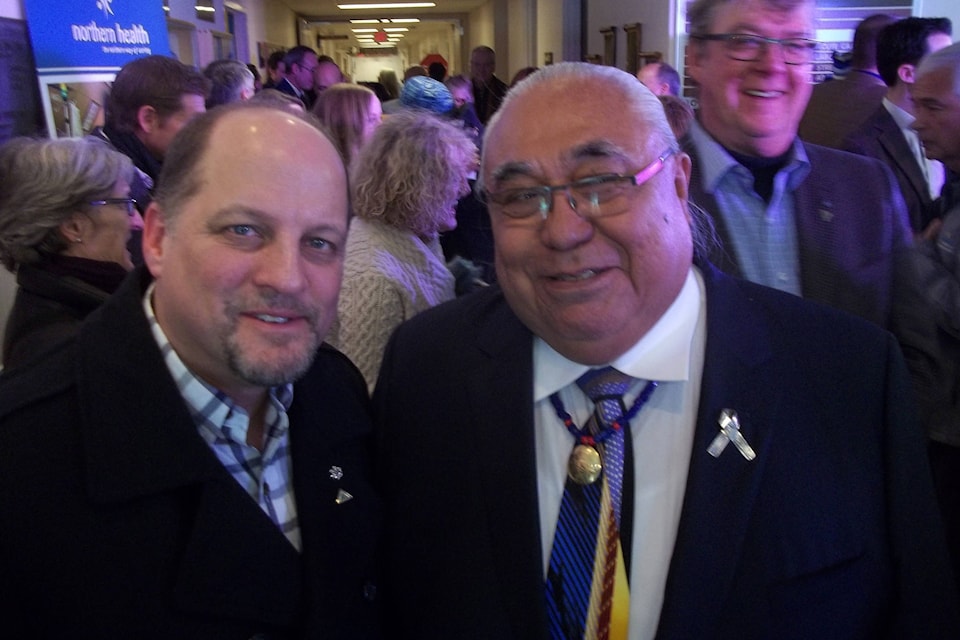With construction approved for a new Mills Memorial Hospital in Terrace, Kitimat and area property owners can expect an increase in their property taxes.
But that should not come as a surprise because of how health care facilities are built and medical equipment purchases are financed in B.C.
In the northwest, financing of the above comes under the authority of North West Regional Hospital District which stretches from Haida Gwaii to Houston.
The District sets a yearly budget based on a standard formula of paying for 40 per cent of construction or equipment purchases with 60 per cent coming from the province.
And just as is the case with local governments, the hospital district gains its income based on the assessed value of properties and buildings.
That’s how regional taxpayers are paying for the recently-opened $50 million hospital at Queen Charlotte City on Haida Gwaii, and how they will pay for the new Mills hospital as well.
Paying for the new Mills will result in an additional $31.15 for every $100,000 of assessed value of property and buildings, indicates information provided by the hospital district.
As a matter of fact, in anticipation of approval for a new Mills, regional hospital district raised taxes last year to build up what amounts to a construction cost savings account. It now stands at $13 million.
Although taxes will increase, the regional hospital district negotiated two items, without which taxes would have even been higher.
The first is that instead of 40 per cent, regional taxpayers will pay for 30 per cent of the costs, meaning the province’s portion increases from 60 to 70 per cent.
Just as crucial is the second negotiated point - a cap on the 30 per cent which works out to $113.7 million on a projected cost so far in the $380 million range.
“I am proud of the [regional hospital district] board who wrestled with this issue, and then after much debate, made a unified decision to support this project at 30 per cent,” said board chair Harry Nyce of the deal.
The board had at first said regional taxpayers should pay only 20 per cent but Nyce said the 30 pcent was a “fair compromise with the province that will allow the level of health care and health services in the northwest to increase.”
“The capped contribution will provide protection for our taxpayers,” said Nyce.
Elsewhere in B.C., in the Cariboo for example, taxpayers there are to pay 40 per cent for a substantial update of the Williams Lake hospital which is to cost upwards of $100 million.
In Dawson Creek, where residents have spent years advocating for an addition to their hospital as well as extensive renovations, regional hospital district officials have already stated they’re also willing to pay 40 per cent.
Kitimat and area residents should also take some comfort in the 70/30 new Mills cost split because that’s the same ratio affecting regional taxpayers in financing the Kitimat hospital and health centre which opened in 2002.
Paying off the regional hospital district’s borrowing for its 30 per cent will be completed in December 2022, meaning the overall impact to taxpayers of the new Mills tax increase should be somewhat eased.
Speaking at the official announcement in Terrace on February 9 that a new Mills will be built, Kitimat mayor Germuth said the resulting state-of-the-art hospital will serve local residents well.
“This is a great announcement and not just for Kitimat but for the entire northwest,” said Germuth, who is also chair of the Kitimat-Stikine regional district and a director on the regional hospital district.
“A new Mills will enhance all of our health services in the northwest.”
Germuth said the new facility, to be roughly twice the size of the current Mills, sends a strong signal to companies looking to invest in the region.
“This is a good message. It will help industries attract the best workers,” he said.
That’s particularly the case with Kitimat’s two potential liquefied natural gas projects, LNG Canada and Kitimat LNG.
The former announced last month it had narrowed down to two the groups of companies who would build the plant and was working with each to define costs and requirements.
That’s raised expectations LNG Canada will make a final investment decision later this year.
Provincial health minister Adrian Dix, who made the new Mills announcement Feb. 9 before a crowd of nearly 60 people in the lobby of the current hospital, also mentioned Kitimat.
The last time the province had a NDP health minister Kitimat got a new hospital and now with another NDP health minister, Terrace is getting a new hospital, he said.
Construction of the new Kitimat General Hospital and accompanying health care centre and multi-level care facility began in the latter years of the previous 1991-2001 NDP government and was opened in 2002 under the then-new BC Liberal government.
